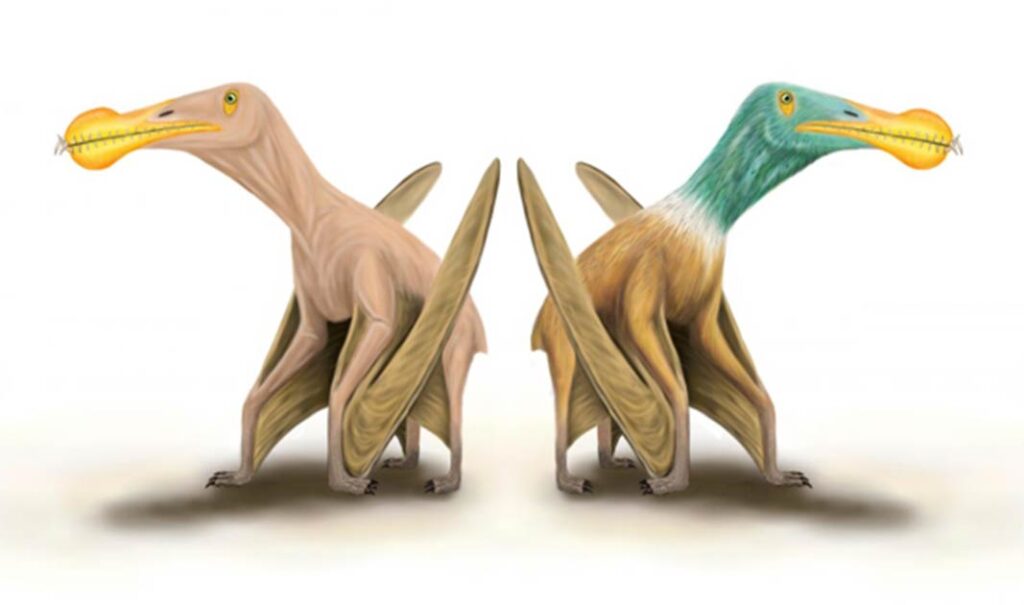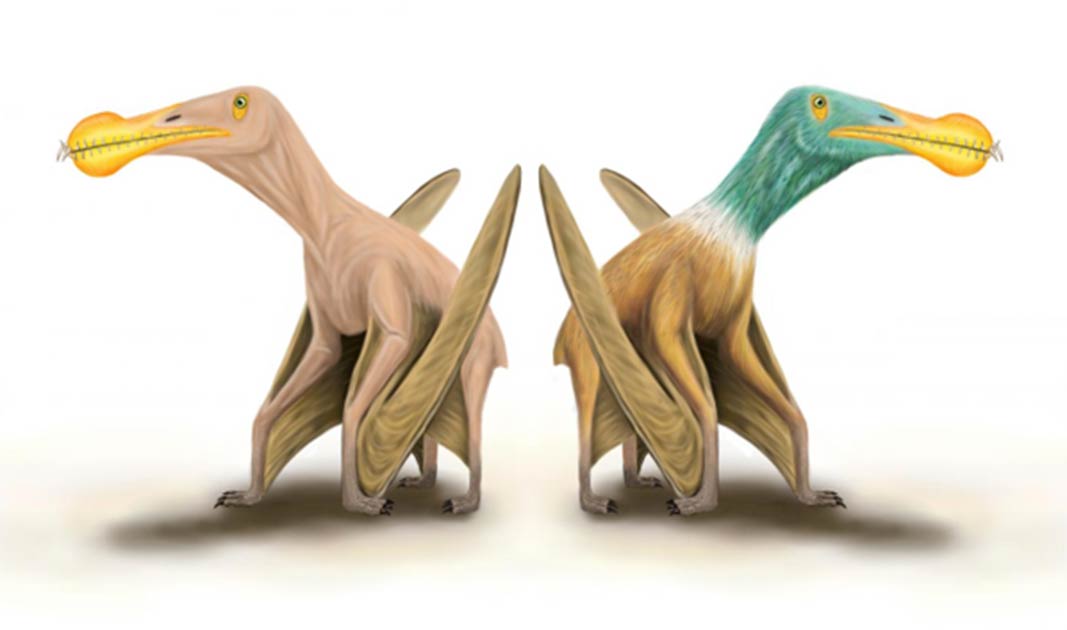

The word “pterosaur” translates to “winged lizard” and these creatures existed during most of the Mesozoic period: from the late Triassic to the end of the Cretaceous (228 to 66 million years ago). Pterosaurs are the earliest vertebrates known to have been able to fly. The largest of these flying reptiles weighed more than 440 pounds (200 kilograms), with wing spans exceeding 32 feet (10 meters), which is similar to the size of a Spitfire fighter plane.
In paleontological circles, 2020 might be remembered as the “year of the pterosaur,” because our scientific understanding of these flying reptilian dinosaurs increased dramatically in this year. Only two weeks ago, Irish News reported on a new paper by Professor David Martill, from the University of Portsmouth, who restudied the pterosaur specimen at the Natural History Museum in London. The paper presented evidence that pterosaurs evolved “sensitive beaks” to help find food, similarly to the way in which modern-day ducks forage for food in the mud. The paper also addressed the question of whether the pterosaur had feathers or not.
Did Pterosaurs Have Feathers?
It is generally agreed that pterosaur wings were formed by a thick membrane of skin and muscle that stretched from its ankles to a dramatically lengthened fourth finger. A 2018 study by researchers at Nanjing University reported evidence of “protofeathers in three pterosaur fossils.” However, a new study published in the journal Nature Ecology and Evolution, by a team of British researchers, completely contradicts the 2018 research suggesting the creatures were “ bald and featherless.”

The fossilized bones of a pterosaur. (PixilRay / Adobe Stock)
Directly challenging the 2018 China report, British palaeontologists David Unwin and Dave Martill reinterpreted the same evidence as was analyzed in the 2018 study and they came to an entirely different conclusion. The British scientists suggested the giant flying reptiles had “no feathers at all” and, in keeping with scientific tradition, they published their view of where they thought the Chinese scientists went wrong. The latest British paper states that the “branching structures” found on fossil specimens, which were interpreted as feathers, actually represent “tough fibers that formed part of the flying reptiles’ wing membranes” that had begun to decay and unravel before being preserved, and not evidence of feathers as was concluded in the 2018 paper.
How Old Theories Are Hard To Overcome With New Views
The underlying importance of this new paper will not yet be obvious to the casual reader, but in every way, it is a declaration of war designed to disprove what can be described as fake, dangerous or fringe science, and here’s why. Dr Unwin, who is a pterosaur expert at the University of Leicester ’s Centre for Palaeobiology Research, says the idea proposed by the 2018 report, that “pterosaurs were feathered,” was fashionable in the 19th-century when fossil evidence for this argument “was, and still is, very weak”.
In the face of this full frontal challenge, the Chinese researchers are sticking to their guns, saying in their reply to the new paper:
‘Our study of two Middle Jurassic anurognathid pterosaurs from China showed that the whisker-like pycnofibres of the pterosaurs include at least four distinct morphologies, rather than one as had been assumed, and that three of these show branching, a key characteristic of feathers.’
The trouble is, that if pterosaurs were indeed found to have been feathered, then all pterosaur, dinosaur and bird evolution would need to be rewritten. Said another way, it means, if the Chinese researchers are right, that feather-like structures evolved at least 80 million years earlier than previous evidence suggested. They include this in their reply to the new paper, saying, “The net effect of this discovery is to shift the origin of feathers back 100Myr before Archaeopteryx, one of the first birds.”
But then, according to Dr Unwin, feathers “would have likely originated in an ancestor of both dinosaurs and pterosaurs, as it is unlikely to have evolved twice.” And furthermore, if the findings of the 2018 Chinese report were factual, it would mean all dinosaurs began as feathered reptiles and lost these coverings as they evolved. According to Dr Unwin, speaking with the Daily Mail, this “is the exact reverse of traditional understanding.”

A trio of 3D-imaged pterosaurs as we have imagined them since we first knew they existed. No feathers here! (Daniel / Adobe Stock)
Unanswered Questions Are Better Than Wrongly Answered Ones
While the new paper claims to be conclusive that pterosaurs didn’t have feathers, the Chinese remain steadfast in their interpretation of the fibers.
What’s more, the new conclusions leave several major questions unanswered by science. These are, according to the new paper, “how did these huge creatures keep warm at night, what limits did this have on their geographic range, did they stay away from colder northern climes as most reptiles do today. And how did they thermoregulate?”
This seems like it would be a simple thing to decide with the evidence right there to observe, but with reputations on the line, the battle isn’t quite won yet.